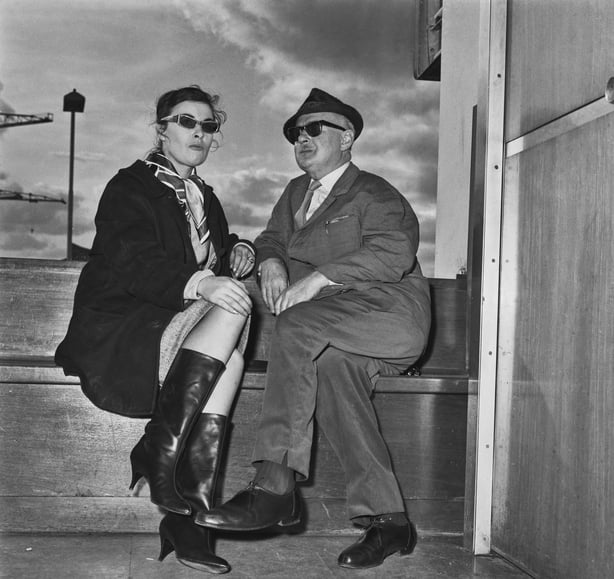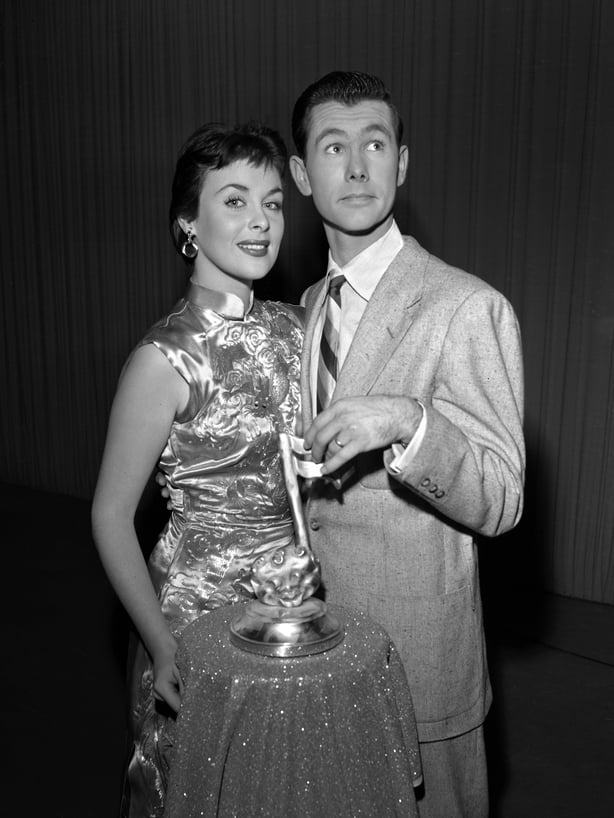Bhí Constance Smith ar dhuine de cheannródaithe aisteoirí mná a bhí le feiceáil i gcuid de mhór-scannáin Hollywood an fichiú haois. Is fiú a scéal a rianadh, ach go háirithe óir gur dhein sí iarracht an fód a sheasamh i gcoinne boic mhóra na stiúidéonna.
Rugadh Constance Mary Smith aisteoir, i mí Eanáir na bliana 1928 i gcathair Luimnigh. Ba as Baile Átha Cliath dá hathair is é lonnaithe le hArm na Breataine sa chathair sin agus Luimníoch ba ea a máthar Mary.
Ba dhuine d'ochtar clainne í Constance. Tar éis dá hathair troid ar son na Breataine le linn an chéad chogaidh domhanda, d’oibrigh sé ar thógáil stáisiún cumhachta Ard na Croise ach nuair a críochnaíodh leis an togra sin bhog an teaghlach go Baile Átha Cliath.

D'éag a hathair go luath ina dhiaidh sin agus ba bhocht an saol a bhí ag an teaghlach dá dheasca sin, iad ag cur fúthu in árasán aon seomra i gceantar dearóil lár na cathrach.
Constance left primary school at a young age and worked tirelessly to survive. She worked as an assistant in various shops and was employed as a servant to the wealthy for a time.
Cailín iontach dathúil abea Constance agus i mí Eanáir 1946, mhol duine éigin di cur isteach ar dhuais speisialta i gcomórtas aisteoireachta, seasamh isteach d'aisteoir, i mBaile Átha Cliath mar ar ghlac Constance ról Hedy Lamarr.
The famous Rank Film Organisation gave her a screen test as a result of this and she signed a seven year contract with them. Moving to London, Constance studied étiquette, stature and the techniques of acting in the specialist college Rank operated in that city - the 'charm school, as it was known at the time.
Chonacthas Constance ar an scáileán mór den chéad uair ina ról mar amhránaí cabaret sa domhan coiriúil in Brighton Rock (1947), scannán bunaithe ar an leabhar cáiliúil den teideal céanna le Graham Greene.
Promo don chlár faisnéise ar Constance Smith le Brian Reddin ó 2018.
Bhí ról níos suntasaí fós aici sa scéinséir Room to Let (1950), mar iníon mná tí a ghlacann tionónta nua mistéireach mar lóistéir, scéalbunaithe ar chás Jack the Ripper. Sa bhliain chéanna thug Rank an bóthar do Smith áfach tar éis dóibh cáineadh a dhéanamh ar a canúint Éireannach is toisc gur dhiúltaigh sí d’iarrachtaí an stiúideo a hainm a athrú.
This continued throughout Smith's professional life after that: her refusal to concede to order from the studio execs, unlike many others who suffered the bullying. Constance would pay a high price for her independent stance, unfortunately, particularly with regard to her career.
Cé go raibh sí dífhostaithe ar feadh tréimhse, bhí an Meiriceánach Darryl Zanuck, Ceann Léirithe Twentieth Century Fox, tar éis suntas a thabhairt don taispeántas cumhachtach a thug Smith mar shearbhónta tí Éireannach sa scannán The Mudlark (1950) a taifeadadh sa bhliain chéanna ar thug Rank bata is bóthar di, is bhronn sé conradh seacht mbliana ar an mbean óg Éireannach.

Zanuck spent a couple of years marketing his new starlet, this beautiful woman from the Emerald Isle. Shot in Canada, Otto Preminger's famous movie, The Thirteenth Letter (1951), saw Smith take another leading role.
Tairgeadh ról níos tábachtaí fós di sa chéad scannán eile, The House in the Square (1951) mar a mbeadh sí ag aisteoireacht i dteannta an t-aisteoir Gael-Mheiriceánach (príomhaisteoira linne), Tyrone Power.
Smith returned to London for the production three but it wasn't long before the politics and uisce-fé-thalamh of the studios began to interfere with the unfortunate Constance deeply involved. The scenes in which she acted were cut from the film with only six weeks of filming complete and she was fired again.
In ainneoin an bhuille mhóir sin, chinntigh Fox gur tairgeadh róil shuntasacha eile do Smith i nglac scannán eile, cé go raibh an chuma ar an scéal gur ar bhonn margaíochta is "íomhá" a fostaíodh í seachas de bharr a buanna aisteoireachta.

The image the newspapers gave her was of a lovely Gael with her own mind. Smith fell into a depression around this time due to her oppressive treatment by the studios and mental health problems and alcohol began to take their toll. Within a short space of time, she was no longer in demand.
D’fhág Smith slán le Hollywood is chuir fúithi san Iodáil mar ar ghlac sí páirt i gcúig scannán nach raibh mórán rath orthu faraor - is lucht scannán na hIodáile ag iarraidh an tÉireannach a chur chun cinn mar leagan donn de Grace Kelly.
Smith married three times but each marriage failed due to her serious problems with alcohol and her poor mental health. She tried to take her own life more than once and spent periods in psychiatric hospitals and half-way houses.
Faoi na luath-1980í bhí Constance bhocht gan dídean i Londain, í fós ag ól go trom is ag maireachtáil ar éigean ar shráideanna crua na cathrach sin gan trua. D’fheicfí í ag ól in éineacht le lucht drabhláis na sráide go minic thart faoi Chearnóg Soho ach bhí sí imithe as aithne orthu siúd a bhíodh i mbun scannánaíochta is aisteoireachta léi ar an scáileán mór tráth sa Chearnóg Soho céanna.
She was found dead on the street in Islington, London in 2003.

(Photo by CBS via Getty Images)
Despite having been one of the greatest Irish actors of the 20th century, you'll find no commemoration plaque in either her home town of Limerick or in Dublin.
Revelations in recent years regarding the dark underbelly that has underpinned the film industry from its very beginnings are regarded as nothing new and elicit little in the way of shock or outrage. As with Constance Smith a half-century ago, some of the world’s leading actresses have highlighted the fact that an industry frequently romanticized for its glitz and glamour has often harboured a darker reality that many insiders have always been reluctant and fearful to discuss.
This is the systemic bullying that takes on so many shapes and forms, ranging from toxic on-set environments to power imbalances that stifle creativity and silence dissent. As with the forgotten Irish starlet of late-40s and early-1950s, tactics including verbal abuse and public humiliation continue in the shadows and the exclusion, gaslighting, and withholding of career opportunities for actors are as difficult to call out today as ever.
The tragedy of Constance Smith is far from a new narrative as relating to the film industry. Smith was one of the few actors working in both Hollywood and in Europe to take a stand and call out bullying as instigated by the big studios. She was one of the few people who fought back against "the system" but she suffered terribly for her refusal to be silenced.
Bhí Constance Smith sean agus ina haonair nuair a cailleadh í ar shráideanna Londain. Ní ró-dhéanach atá sé a h-oidhreacht chróga a cheiliúradh.





